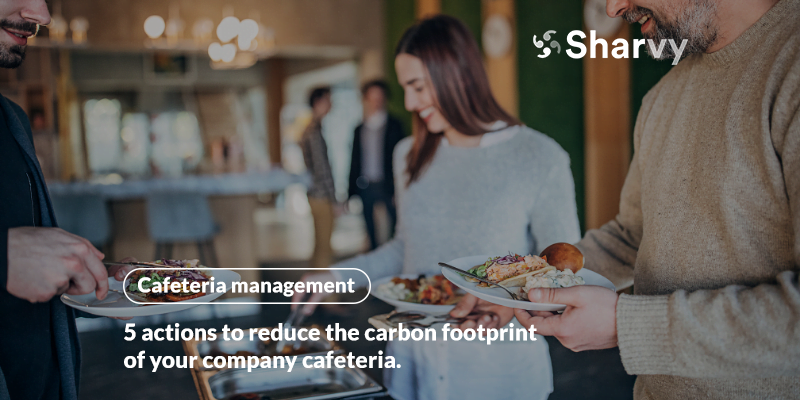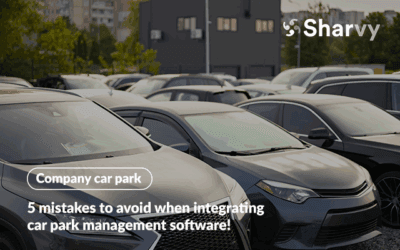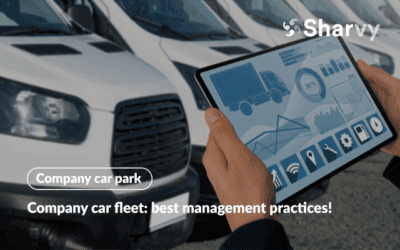It is the end of abundance and carelessness. From now on, the debate around ecological commitment is proving impossible to ignore in the world of catering, so much so that it is increasingly raising and mobilizing the players in the field.
And for a good reason : in recent decades, in response to the wartime famine, the primary objective of the food industry and politicians has been to increase yields. As a result, the industrialization of the sector has accelerated! This is true at all chain stages, from agriculture to distribution and processing.
This meteoric development, focused on production and profitability, needs consequences today. The figures speak for themselves. According to a study conducted by the Agency for Ecological Transition (ADEME), 24% of the carbon footprint of the population comes from food. Out-of-home meals (restaurants, company cafeterias, self-service, etc.) account for 7% of this and cause some problems.
Faced with this ambient slump, action is needed. Aware of the imperatives, professionals in the sector are showing resilience to renew themselves and rethink their ways of doing things. A Sirha Food study conducted in September 2022 reveals that 86% of professionals in the sector are ready to embark on an eco-responsible transition.
However, how do you go about it? What are the first steps to take? How can changes in practices be instilled sustainably? The answers in this article, with a practical case study : the company cafeteria!
A little reminder : what is the carbon footprint ?
The carbon footprint is an indicator that measures the number of greenhouse gases released into the atmosphere by human activity. In other words, it is simply a way of assessing the impact of human activity on the environment.
It should be noted that it can be applied to a person (according to their lifestyle), a company (according to its activities), or a territory.
Why and how to calculate the carbon footprint of your company cafeteria?
The benefits of knowing the carbon footprint of your company cafeteria are significant in many ways.
On the one hand, you become aware of your environmental impact and identify disproportionate sources of emissions. But on the other hand, you get quantified data that you can use as a “starting point” to reverse the trend and see how you are doing due to the new practices you have introduced.
But how do you calculate your carbon footprint? One simplest and most effective way is to carry out a Carbon Footprint.
There are several ways to establish your Carbon Footprint :
- If you do not have a budget dedicated to this initiative : many free online tools (such as the Carbon Footprint calculator) now allow you to obtain an initial rough estimate of your Carbon Footprint. This may be enough to identify the first disproportionate CO2 emissions linked to your activity. However, this approach does not allow you to obtain a certified Carbon Footprint.
- If you have a budget dedicated to this initiative : there are many specialized consultancies, such as Auditel or e-collective, which can help you carry out the Carbon Footprint from prospective analysis, through reporting and implementing an ambitious plan, to the definition of a strategic roadmap. But beware, this has a cost. However, remember that SaaS solutions (less expensive than a consulting firm), such as Pebble, guide you too through each step of your Carbon Footprint.
How to reduce the carbon footprint of your company cafeteria? 5 actions to implement!
There are many ways to reduce the environmental impact of your company cafeteria, and they are based on innovations in how your restaurant is managed and changes in food consumption.
1. Rethink your company cafeteria management in the age of hybrid work !
Since the pandemic, hybrid working has become the norm for many companies. However, this new work organization is not at the expense of the office! Most of the time, employees alternate between two days of teleworking and three days on-site. This is one of the consequences of the growth of these new forms of work : flex office, desk sharing, hot desking, corpoworking, etc.
According to Catherine GUIZOL, Director of Workplace Transformation & Innovation at Ipsen, this is linked to an average drop in the number of people using the company cafeteria by 20%.
However, this is not the only observation. One of the greatest difficulties for those in charge of the company cafeteria is undoubtedly the fluctuation in the number of guests from day to day. In addition to the economic cost, this work hybridization leads to CSR problems. Therefore, today’s objective for the manager is to anticipate the number of covers, plan the right quantities and reduce food waste.
✔ Our advice :
On this point, the Sharvy application can be the solution! It allows you to modernize and simplify your company cafeteria management.
Within the web and/or mobile application, you define the slots open for reservation, their capacity, and a reservation cut-off time for the day.
Once you have set these parameters, the application can be used by your employees. They can anticipate their presence in the cafeteria and reserve a slot for the desired days. This mode of operation allows restaurant owners to:
- Consult the number of reservations per slot on the application,
- Anticipate the number of people and the number of seats to plan the right quantities,
- Better manage access to the cafeteria by avoiding waiting times and long queues,
- Anticipate the replenishment of supplies for the coming weeks according to the reservations.
Curious to know more? Ask for a demonstration of the solution!
2. Favor short circuits with local, seasonal, and sustainable products!
More than a daily need, the lunch break is a real vector of well-being and conviviality. As a result, companies can no longer put blinkers on and have everything to gain by offering a cafeteria solution adapted to the needs of their workforce.
Since the health crisis, it is clear that awareness is growing, prompting employees to question their eating habits. Namely: a short break in front of their screen without enjoying a balanced meal with their colleagues. These habits, which were common before the pandemic, are gradually disappearing.
As a result, employees are becoming more demanding about what they eat at work. According to the UK Statista Research Service, 60% of UK employees want local, seasonal, and sustainable products.
For example, consider a corporate restaurant that chooses to source fruits and vegetables directly from local farmers. By establishing partnerships with producers located within 100 km, this restaurant helps reduce CO2 emissions from food transport while supporting the local economy and reducing packaging use.
Thus, this revolution in practices and this desire to consume better must be embodied by the implementation by companies of services in line with their employees’ expectations. This is achieved through healthier and more sustainable food in the company cafeteria.
In addition to satisfying the expectations of your employees, you reduce your carbon footprint. You avoid highly polluting imports (transport, packaging, conditioning) by favoring short circuits and local sourcing. This way, you benefit from fresher, tastier products and highlight your region.
✔ Our advice :
However, before claiming to be a locavore (consuming only products grown within a 160 km radius of your home), there is nothing to prevent you from starting by favoring products grown in France and, at the same time, reducing “exotic” ingredients.
3. Fight against food waste in your company cafeteria!
Reducing waste also means reducing waste: you kill two birds with one stone.
As mentioned above, one of the easiest ways to reduce food waste is to correctly anticipate the number of place settings for the coming days. This way, you plan for the right quantities and limit the surplus. Although with hybrid work, this anticipation is challenging!
To better manage food waste and reduce the carbon footprint, consider introducing a feedback system where employees can report their satisfaction with portion sizes and meal quality via a mobile app. This feedback can help the restaurant adjust the quantities prepared, thereby minimizing food surplus. Similar initiatives have enabled some companies to significantly reduce waste while enhancing environmental awareness among employees and promoting more responsible consumption.
Remember that one day less face-to-face work on average means a 10% to 30% drop in the number of people using the company cafeteria. This is why, on this point, the Sharvy application can be your right-hand man.
The Atlantic Group trusted Sharvy and used the application to manage and optimize the occupation of its cafeteria thanks to a reservation system set up at their Parisian headquarters.
Want to know more? Download the case study!
However, there are other things you can do. At the same time, consider regularly assessing the condition of the plates that are served. Ask yourself several things: are some dishes too large? Do some decorations and garnishes always end up in the bin? Is the bread cut up and distributed randomly, or is it graded?
Finally, you may also go for a shorter menu. Remember that the longer your card, the more likely products will go to waste. A more concise menu gives you more control over your supplies and is generally seen as a sign of quality by employees.
✔ Our advice :
We have one last idea for you if you are already doing the above. Do you trash-cook daily? This trend has become popular over the previous few years, which consists of cooking all of your products, even the parts you tend to throw away! But, in the end, you can quickly put them to good use by offering chips of vegetable peelings as a side dish, using tops to make a pesto, a velouté or a gazpacho, by blending damaged and/or too old vegetables into a soup or a purée… In the end, there are many ideas.
One last piece of advice is to weigh your waste by type to identify where you should concentrate your reduction efforts and thus reduce your carbon footprint as much as possible.
4. Make sure you do not have excessive electricity and water consumption!
There’s no doubt about it: the energy used not only for preparing the food but also for the comfort of your staff in the room (heating, ventilation, and air conditioning), as well as for lighting, can quickly add up and be very energy-intensive.
To save energy and thus significantly reduce your carbon footprint, you can start by considering less energy-intensive cooking methods. For example, steaming or low-temperature cooking. As well as being more environmentally friendly, they better preserve the vitamins and enzymes in the vegetables. Also, use an induction cooker instead of a halogen cooker. If you use burners instead, opt for a sequential burner to reduce your consumption and ensure more even cooking.
At the same time, remember to check your equipment : ovens, fridges, cold rooms, and above all, the operation of their thermostats. In the same vein, improve your lighting. For example, are you using halogen bulbs? If so, opt for LED bulbs to make more significant savings.
Finally, make savings on your water consumption in the kitchen. For example, consider installing flow regulators on taps. At the same time, clean vegetables or utensils in a basin rather than under running water. In addition, you can use this water to water the plants and/or green areas around the restaurant.
✔ Our advice :
There are also good practices to adopt that are simple and cost nothing! For example, ensure that lights are kept during working hours. Also, consider turning down the heating to a small degree. This can save 5-10% of energy! Also, keep the heat in by closing doors and windows. Also, make sure you don’t open the oven door unintentionally…
Ultimately, these are common sense actions that we already apply in our homes to reduce our impact and lower our bills! So, think about using them in your business too.
5. Give a second life to your excess food and recycle your bio-waste!
Despite your anticipation, you may end up with a surplus. In such cases, rather than throwing away and/or clogging up your bins, think about donating to associations that work in food aid. Like FareShare or FoodCycle.
In the same spirit, consider using various applications, such as Too Good To Go or Phenix, to avoid stupidly throwing away dishes at the end of your service. By opting for this practice, you offer, via the application, surprise baskets to users for a relatively low price compared to the real value of the products. This allows you to lose less money and even reimburse some expenses!
In parallel, consider installing a compost bin near your company cafeteria. On the one hand, it is an opportunity to raise awareness among your cooks and employees about organic waste recovery. But on the other hand, it is a simple & eco-responsible way to reduce and recover your organic waste. This is to produce natural fertilizer for your company’s green spaces.
✔ Our advice :
In addition to the solutions mentioned above, find out about the recovery and recycling channels in your town and/or department. For example, some associations and companies collect shells, coffee grounds, and all fermentable vegetable bio-waste to produce compost and/or biogas.
In conclusion
As you have seen, there are many actions you can take to make your company cafeteria a little more sustainable & responsible every day. This list is not exhaustive, but it does include the 5 actions that we consider to be essential and, at the same time, simple to undertake.
Remember, however, that you need to remain flexible on certain aspects and maintain sight of the ultimate goal: reducing your company cafeteria’s environmental impact and carbon footprint.
Finally, remember that contributing to the definition of a better world more respectful of nature and humanity implies some effort. But these sacrifices are minor compared to the benefits obtained!
Have a question? Check out the FAQ!
How long can a carbon assessment take ?
The duration of a carbon footprint assessment varies according to the size of your business and the issues facing your restaurant. However, drawing up a complete evaluation and action plan takes two to four months.
In addition, it is wise to carry out the assessment annually to monitor the evolution of your emissions and the action plan from year to year.
Do companies have an obligation to carry out a Carbon Footprint ?
Most businesses are not required by law to lower carbon emissions, though some must measure and report them.
For example, since 1 October 2013, the Companies Act 2006 (Strategic Report and Directors’ Report) Regulations has required all UK quoted companies to report on their greenhouse gas emissions as part of their annual Directors’ Report.
Want to learn more? Check out our latest articles!
5 mistakes to avoid when integrating car park management software!
What are the 5 most common mistakes to avoid before and during the integration of parking management software? Focus!
Company car fleet: best management practices!
Should you electrify, pool or automate your company car fleet? What are the best management practices? Let’s take a closer look!
Property strategy: stay or move, what choices should your company make?
Should you stay or move? For many companies, this question is now a key part of their property strategy : find the answers here!
Subscribe to our newsletter!
PARKING & WORKPLACE MANAGEMENT SOLUTION
Car park management - Charging points monitoring - Desk booking - Booking by time slots
SUBSCRIBE TO THE NEWSLETTER
Receive the latest Parking & Workplace trends by email once a month.











